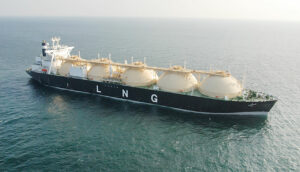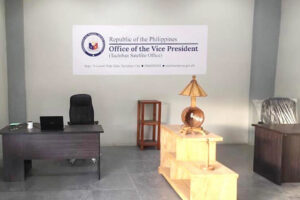The Global Food Crisis and us

A global food crisis is coming, if it’s not already here.
The major driver of this food crisis is the Ukraine-Russia war. Both Ukraine and Russia are major exporters of wheat, barley, sunflower oil, and corn. Together, Ukraine and Russia account for about a third of global wheat exports and 20% of corn exports. Disruptions due to the war, from sanctions against Russia to fighting in the fields in Ukraine, have sent wheat and corn prices soaring.
Expect the price of bread, pasta, and ensaymada to soar due to rising wheat prices, but also pork, chicken, and beef, because corn is feedstock for livestock.
However, rising wheat and corn prices are just the tip of the iceberg. More importantly, fertilizer prices are skyrocketing. One factor is the soaring price of natural gas, from which nitrogen-based fertilizer is derived. Another factor is that Russia (and its ally Belarus) and Ukraine are major producers of potash, ammonium nitrate, and phosphorous, which are ingredients for the soil.
If farmers use less fertilizer because of high prices, agricultural production will fall — worldwide.
Although our food staple is rice rather than bread, and therefore the impact of rising wheat prices is not as bad, we won’t be unaffected by the global food crisis. Worse, our agricultural sector is so weak that it can’t be relied upon to produce more in response to the global food shortage.
The next administration will, therefore, confront an enormous crisis. The fiscal stresses caused by the pandemic will be nothing compared to the food crisis that is to come.
A food crisis will affect everybody, especially the poor, whose meager incomes are spent mainly on food. Hunger and malnutrition will increase by several orders of magnitude.
The problem is that a food crisis is inevitably a political crisis. A hungry populace will lash out at the political leadership, even if geopolitical events are the real cause. An analyst pointed out that rising food prices in 2008-2010, caused by high oil and wheat prices, sparked the Arab Spring wherein riots and revolts rocked Tunisia, Egypt, and other Middle Eastern countries.
Therefore, the next administration, if it’s not to lose the mandate and political goodwill it got from the May election, must act decisively as soon as it takes over.
It must dramatically increase supply, even if it must resort to imports. Our local production capacity is so weak that it can’t ramp up supply. Bereft of fertilizers, local agricultural production will fall even further.
The next administration should move quickly to expand the agriculture import quotas, or abolish the quantitative restrictions of corn, chicken, pork, and fish. If possible, agricultural trade must be liberalized, as it is with our Southeast Asian neighbors. (Corn tariffs in Vietnam is just 4% vs. 35% for our in-quota tariffs and 50% for out-quota tariffs). This will enable the private sector to quickly import much-needed food, albeit at higher prices, to alleviate the expected shortage of food.
Protectionism is not serving the interests of farmers and Filipino consumers, not if massive hunger and malnutrition is the alternative. As for government, it must act as if there’s a war or as if we are facing another pandemic. It must discard years of neglect of the agricultural sector and adopt a whole of society approach to solve the food crisis.
Government must mobilize the private sector, particularly conglomerates like San Miguel, RFM, Universal Robina, and Ayala, to go into food production. Let’s face it: big is better. Study after study have shown that bigger farms have higher productivity and lower costs than smaller farms. In a study for the Philippine Institute for Development Studies (PIDS), agricultural economist Dr. Roehl Briones reported that the cost of swine meat in 2018 was P148 per kilo for backyard operators and P112.40 for commercial operators or about a 30% difference. For broilers, the cost per kilo was P78 for backyard operators compared to P71 for commercial operators.
However, compared to its ASEAN peers, the Philippines is the champion cost producer. In 2018, the Philippines came in at P112.4 per kilo; compared to Vietnam, P93.85 per kilo; Thailand P99.16 per kilo; and China, P106.97 per kilo.
Bigger is not only about scale economics but also biosecurity. Bigger farms are much better when it comes to biosecurity controls, so they are less susceptible to African Swine Fever or other plant and animal viruses. The principal cause of the spread of the African Swine Fever has been backyard operators.
However, a deeper reason why chicken and pork prices are so high in the Philippines is that corn prices are high, at least double that of Thailand. Corn accounts for about 60% of the cost of chicken and pork.
Local corn prices are high because productivity is so low. According to agricultural economist Dr. Karlo Adriano, corn production per hectare is 4.215 MT, among the lowest in ASEAN, compared to Indonesia, which is one MT higher at 5.2 MT/hectare.
The real culprit is our small-scale agriculture, thanks to the Comprehensive Agrarian Reform Law (CARL). The average farm size of corn farmers’ plots is only .54 hectare, according to Dr. Adriano.
Productivity is so low in this sector that poverty incidence among corn farmers is 45%.
Kawawa naman (Pity them). That’s the objection to liberalizing imports and enabling larger commercial farms into the sector.
First, we can’t allow the status quo to remain. A food crisis will hurt the entire nation, including the very farmers who are supposedly being protected but who are also consumers. It will exacerbate hunger and malnutrition, which is already causing poor educational performance among our schoolchildren. It will spark demands for higher wages and make industry even more uncompetitive.
Second, these farmers are already poor, among the poorest of the poor. The status quo won’t help them. Better that change happen so that they can increase their productivity or that they move toward more productive endeavors with the help of social transfer payments from the government.
Third, if the farmers can lease their land (and they can’t due to their indebtedness with the Land Bank), they can earn a lease income and possibly be hired as farm workers in a commercial farm. As farm workers, they can be entitled to a stable salary and social security benefits, which they don’t enjoy as farmer-owners.
They can also be encouraged to migrate to urban centers or agriculture processing zones, where their productivity and wages will be much higher. However, this needs labor market reform to ease their transition from the rural to urban areas.
Therefore, the next administration must consider debt condonation for farmers (to allow farmer-entrepreneurs and agricultural companies to sell or lease their lands) together with amending the Comprehensive Agrarian Reform Law to increase the land retention limit from five hectares to a commercially viable 25 hectares. This is the only way to usher in commercial farming.
For the sake of food security, agricultural modernization must happen. The decades-long policy of agricultural protectionism and traditional small-scale agriculture must end. The food crisis is an opportunity to end this policy because the alternative is a status quo of rising food prices, food shortages, rising hunger, severe malnutrition — and who knows what else? — perhaps political and social instability.
The global food crisis is coming for us. Because our agricultural sector is so weak, we are like an unvaccinated diabetic 80-year-old who’s going to catch COVID. The next administration can’t resort to the usual populist nostrums like free irrigation, free fertilizer, government subsidies, and protectionism. That would be like prescribing Ivermectin instead of vaccinations. Food inflation and social instability will ensue. Instead, it must use its new mandate to modernize agriculture by cutting the Gordian Knot of agricultural protectionism, land fragmentation, and traditional small-scale agriculture.
Calixto V. Chikiamco is a member of the board of IDEA (Institute for Development and Econometric Analysis).




